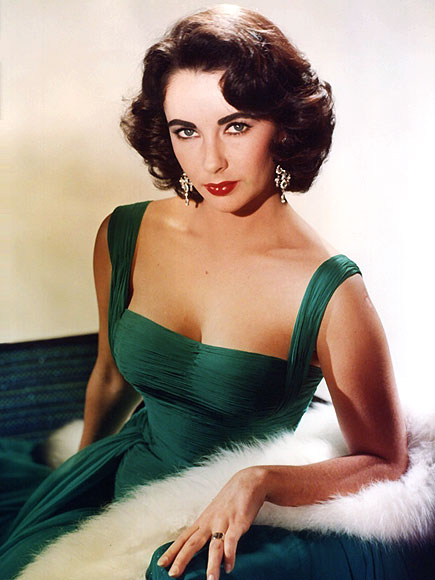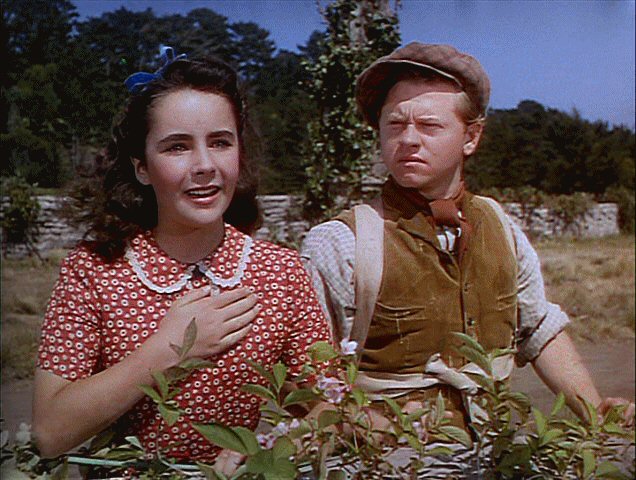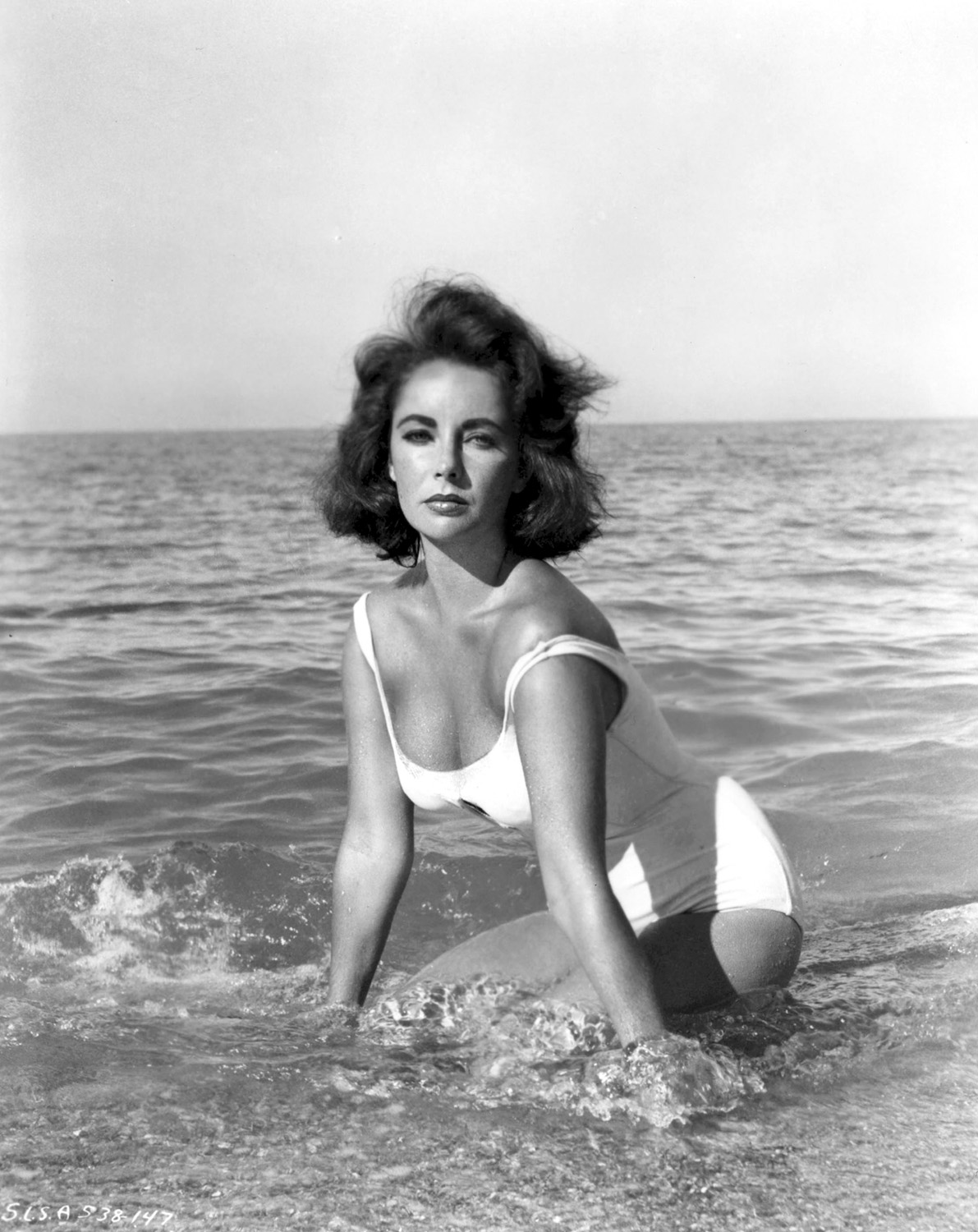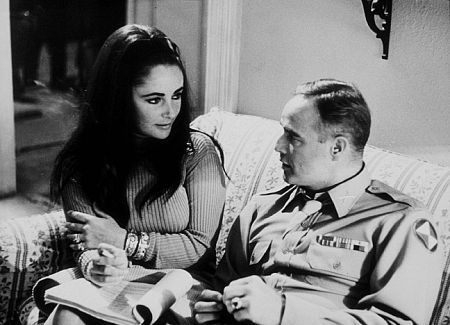Bawdy, beautiful, vulgar, glamorous, unpretentious, wild, tempestuous: one-of-a-kind. These words, and more, have all been used to describe that force of nature known as Elizabeth Taylor. The immortal Miss Taylor has died at the age 79. Her death comes as no surprise, having suffered a succession of illnesses for so long; for lovers of film, however, it is sadness, indeed, that such a talent has left us. Few deaths can be said to end an era, but hers truly does. She commanded so much attention for so long and for so many different reasons: her beauty, her talent, her eight marriages, her charitable work, her health problems that plagued her for decades and threatened to take her life more than once.
Elizabeth Taylor was a great actress and a great star and always had been. Born in Hampstead, London, to American parents, she made her first film at the age of nine in “There’s One Born Every Minute,” her only film for Universal Studios. MGM bought her out with one of its infamous seven-year contracts, and promptly cast her alongside Roddy McDowall (with whom she would remain life-long friends) in “Lassie Come Home.” It was her role as Velvet Brown in “National Velvet,” however, that made her a star at the age of 12. She had been a star ever since.
Miss Taylor never outgrew her talent, as happens with numerous child stars. Her first adult role was in the film “Conspirator.” The film was a failure at the box office, but 16-year-old Elizabeth playing a 21-year-old debutante won critical praise. Her first box office hit as an adult was with Spencer Tracy in “Father of the Bride,” but it was her role as Angela Vickers in George Stevens’ “A Place in the Sun” (1951), that catapulted her into the ranks of the immortal.
“A Place in the Sun” is the film that I first came into contact with Elizabeth Taylor. I was 17 when I saw it and the effect she had on me was like a sledgehammer to the chest. When Montgomery Clift is lining up a shot at the pool table, and looks up, thunderstruck, as Elizabeth walks into the room, achingly beautiful, violet eyes boring into his heart and soul (and regions down south), Clift was a goner. And so was I.
It was this incandescent beauty that consigned her to a string of lightweight films that capitalized on her physical attributes. She once said of her looks: “If you were considered pretty, you might as well have been a waitress trying to act – you were treated with no respect at all.” She fought long and hard for meatier roles that eventually came her way, earning her Best Actress nominations in “Raintree County” (1957), “Cat on a Hot Tin Roof” (1958) and, most remarkably, in “Suddenly, Last Summer” (1959) which contains one of her all-time great performances.
She won numerous awards, including Best Actress Oscars for “Butterfield 8” (1961) and “Who’s Afraid of Virginia Woolf?” (1967). In 1960 she became the highest paid actress up to that time, signing a million dollar contract to play Cleopatra (the film that made women everywhere break out their eyeliner). In 1993, she won the Academy’s Jean Hersholt Humanitarian Award for her tireless charity work.
When her friend Rock Hudson died of AIDS, she began the National AIDS Research Foundation, which later merged into the American Foundation for AIDS Research (AMFAR) in 1985, becoming one of the world’s largest charity events, long before this became “trendy.” By 1999, her charity had raised an estimated $50 million to fight the disease.
Miss Taylor once remarked that she was immune to criticism and that certainly appears to be the case. She marched to her own tune and defied convention, from her sense of style (Mr. Blackwell placed her on his infamous worst-dressed list for years), to her wit and ability to toss out some cherished pearls of wisdom, such as:
“Success is a great deodorant. It takes away all your past smells.”
“The problem with people who have no vices is that generally you can be pretty sure they’re going to have some pretty annoying virtues.”
“When people say, ‘She’s got everything’, I’ve got one answer – I haven’t had tomorrow.”
“I am a very committed wife. And I should be committed too – for being married so many times.”
“I fell off my pink cloud with a thud.”
“I have a woman’s body and a child’s emotions.”
“I’ve only slept with men I’ve been married to. How many women can make that claim?”
Elizabeth Taylor possessed courage and strength, not just to fly in the face of convention or her detractors, but when it came to matters of her health. She had an emergency tracheotomy in 1959 during a battle with pneumonia, and a brain tumor in the 1990s. Later, she was plagued with chronic back problems that can be traced back to a fall she took from a horse in “National Velvet.”
When the retrospectives of her work start airing, watch her work, her progression from amazing child star, to great actress. Among the work listed above, try to catch her and Marlon Brando in John Huston’s “Reflections in a Golden Eye” (1967). A severely overlooked film, it shows the risks Elizabeth was willing to take as an actress, for it is her work that is most important.
She will be remembered for her eight marriages, her health issues, her unflagging loyalty to friends, her charity work, her love of jewelry (diamonds in particular) and, Oh Lord, her incredible beauty. But it is for her talent and work as an actress and in the greatness of the many performances she has left us, that she will, rightly, endure in our memories and our hearts.

Pretty standard story really. I couldn’t find a decent job in any other strata of commerce or industry, so I’m in show business, which makes me unemployable in about 48 other states.
I am an actor and mighty proud of that fact; I even get hired from time to time. In 2006, I became a producer, helping produce the independent film DOWN FOR LIFE with Danny Glover, Snoop Dogg, Elizabeth Pena, Kate Del Castillo, Emily Rios and Jessica Romero.
I currently have other projects in the pipeline.
I have a wide range of likes and desires: music (blues, classic rock, jazz, classical), love to play the drums, clarinet and some sax; I’m an avid reader, and, as everyone has probably guessed, a true movie freak. A term I use proudly.

















